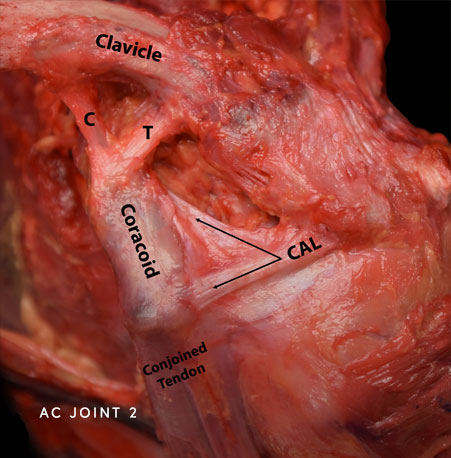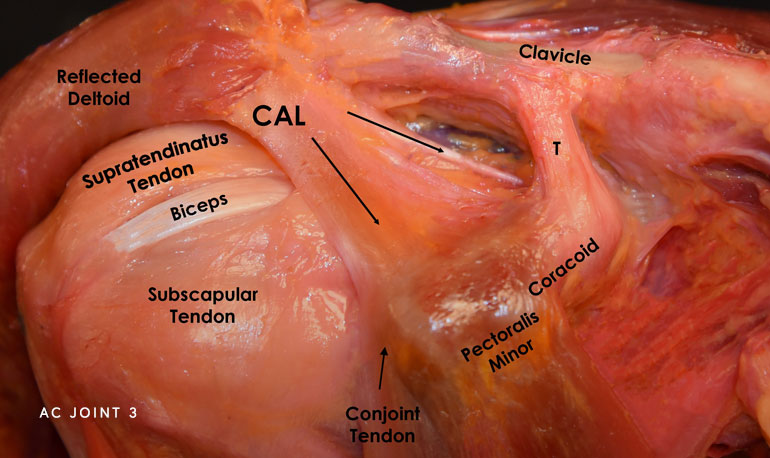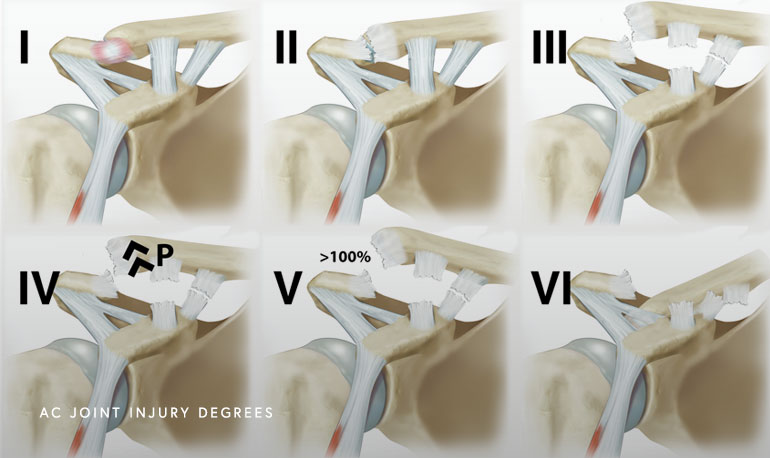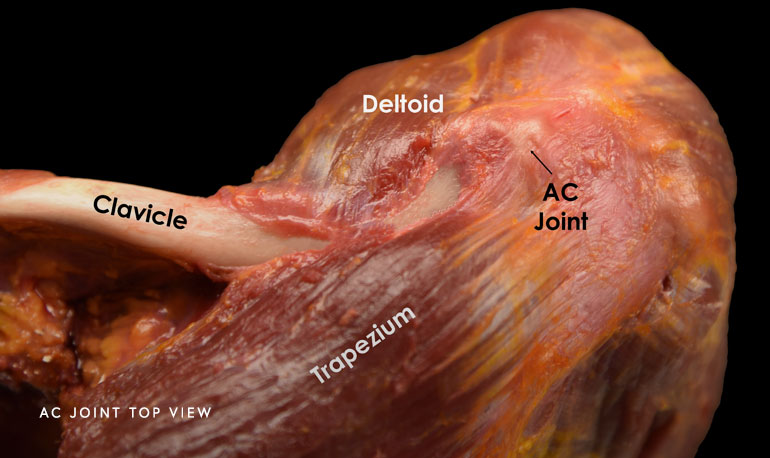AC Joint
What is the AC Joint?
The acromioclavicular (AC) joint is the joint composed by the clavicle (collarbone) and the highest point of the acromion (shoulder blade). The AC joint is held closely together by multiple ligaments (one in the front, one in the back, one on top and one in the bottom). Additionally, there are two ligaments connected to another bone called the coracoid (conoid and trapezoid) that keep the clavicle in place.


How does an AC joint injury occur?
An AC joint injury is a common shoulder condition generally caused by a hard fall or blunt force to the joint. Dr. Jorge Chahla, a sports medicine orthopaedic surgeon can help alleviate acromioclavicular joint pain and deformity after an injury and return patients to an active, healthy lifestyle. The most common cause of an AC joint injury is a direct contact force impacting the top of the shoulder. The fall can cause the joint to experience a mild sprain or, in cases of a particularly forceful impact, a complete shoulder separation. An AC joint injury is measured in multiple grades, spanning from Grade 1 as a mild sprain up to Grade 6 as a debilitating and complete disruption resulting in a total AC joint separation.

What are the Symptoms of an AC Joint Injury?
Usually the main symptom is pain over the AC joint and if the ligaments were disrupted there can be a bump over the shoulder. Acromioclavicular joint pain ranges from mild tenderness to sharp, intense pain following injury. The pain is commonly felt at the top of the shoulder.

How to Diagnose an AC Joint Injury?
A comprehensive physical examination of the shoulder along with a detailed history and a series of x-rays performed by Dr. Chahla will lead to a confirmed AC joint injury diagnosis. An x-ray can also help rule out any additional injuries to the bone, such as a fracture of the end of the collarbone. In addition to x-ray, an MRI scan to determine the injury grade and assess injury of surrounding ligaments in order to arrive at an effective and individualized treatment plan.
What are AC Injury Treatment Options?
Depending on the pain and the function, options range from conservative treatment to surgical options. These options should be tailored to each patient’s needs. Injury grade can help determine which is the best option.
Can an AC injury be treated without Surgery?
Yes, most of the times this is the preferred treatment. Lower grade AC joint injuries are commonly treated with a non-surgical approach that includes rest, joint stabilization in a sling or similar device, medications, and a detailed physical therapy program. It is strongly suggested that patients work with the in-house physical therapists at Howard Head Sports Medicine to optimize their rehabilitation. The combination of these non-surgical measures decreases acromioclavicular joint pain and return patients to normal activities within 1-6 weeks.
How to Treat AC Injury with Surgery?
A surgical procedure may be recommended by Dr. Chahla in higher grade injuries or when non operative treatments have failed. An arthroscopic AC joint stabilization procedure is generally performed by Dr. Chahla to stabilize the joint and decrease and correct the separation between the acromion and clavicle. In most cases, the AC joint is reconstructed by utilizing a ligament graft in combination with suture fixation in order to restore full joint stability and function. Dr. Provencher will evaluate a patient’s AC joint injury on a case-by-case basis through physical examination and acquired imaging to determine the proper surgical technique needed to reconstruct damaged surrounding ligaments and resolve the AC joint injury.
At a Glance
Dr. Jorge Chahla
- Triple fellowship-trained sports medicine surgeon
- Performs over 500 surgeries per year
- Assistant professor of orthopedic surgery at Rush University
- Learn more


